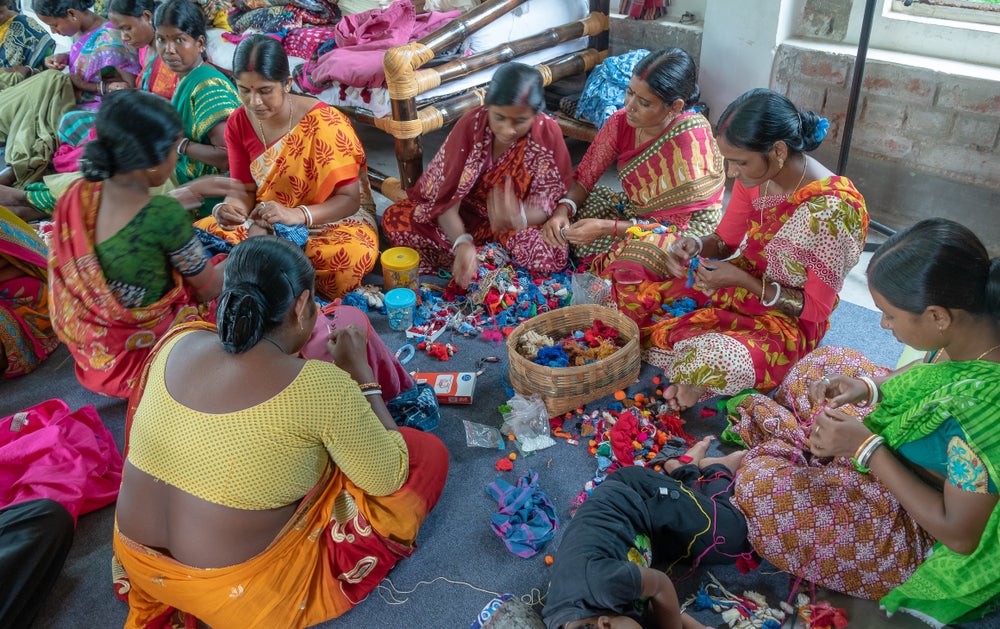 Craftswoman in West Bengal, India
Craftswoman in West Bengal, India
With the right approach, yes!
Also, at 36 percent, female workforce participation in the region is also far below global average and it’s declining. South Asian women who are not formally employed often hold vulnerable or low skill-jobs where they earn less and have few to no benefits.
However, political momentum for regional cooperation between Bangladesh, Bhutan, India, and Nepal (BBIN) has recently picked up, promising greater economic opportunity for South Asian citizens, especially women.
To that end, the Business, Enterprise and Employment Support for Women in South Asia (BEES) was formally registered with the help of the World Bank a few weeks ago to support cross-border learning, collective action, and advocacy to empower South Asian women.
In September 2019, the World Bank facilitated a producer-to-producer (P2P) learning event for 18 grassroots producers and artisans from Bhutan, India, and Nepal. BRAC Aarong, a social enterprise that supports Bangladeshi artisans in selling their products in cities, was a partner of the event.
Previously, Aarong hosted a similar forum for BEES members in Dhaka, where heads of business from member organizations learned about Aarong’s end-to-end value chain. Participants had an opportunity to evaluate best practices for their own enterprises and decide on relevant skill sectors for a P2P program.
Such cross-country training sessions allow for learning or honing of important skills such as product development, merchandising and marketing. The goal is to help women participants make better products, increase their sales, or include more women in their enterprise.
RangSutra, a community-owned craft company, viewed Aarong’s fabric inspection machine as a labor-saving best practice and installed the same device at its production center in Bikaner, Rajasthan, India four months later.
Some artisans also learned from Aarong producers how they could scale up their entire businesses or parts of it.

They started with a site visit to the Ayesha Abed Foundation (AAF) in Manikganj, a production facility for Aarong.
Chencho Gyeltshen, an artisan from Bhutan, learned about various worker safeguards (e.g. protective eyeglasses for machine embroidery, respiratory masks for chemical fumes, needle guards for sewing machines, etc.) and the comprehensive health insurance plan available to Aarong Foundation artisans.
Participants also traveled to Boalia village to observe hand embroidery skills at a sub-center for Aarong.
The final stop was in Bethila village in Manikganj, where Aarong houses its cotton and yarn spinning and weaving wing.
Visiting artisans enjoyed Aarong’s large facility and capacity. For many it was an insight into what they could achieve for their enterprises with the correct guidance and investment.
“I easily learned hand embroidery designs with the help of local artisans,” said Shalini Dubey, an Indian artisan.“I now oversee teaching Bangladeshi embroidered quilting (nakshi katha) to roughly 150 women in our organization. I relish teaching these women, for whom learning new skills and earning a decent income guarantee a life of dignity.”
The BEES network is supported by the South Asia Regional Trade Facilitation Program (SARTFP), a World Bank program funded by Australia’s Department of Foreign Affairs and Trade that seeks to enhance trade and economic prospects among BBIN countries, with a focus on women’s participation in trade.





Join the Conversation